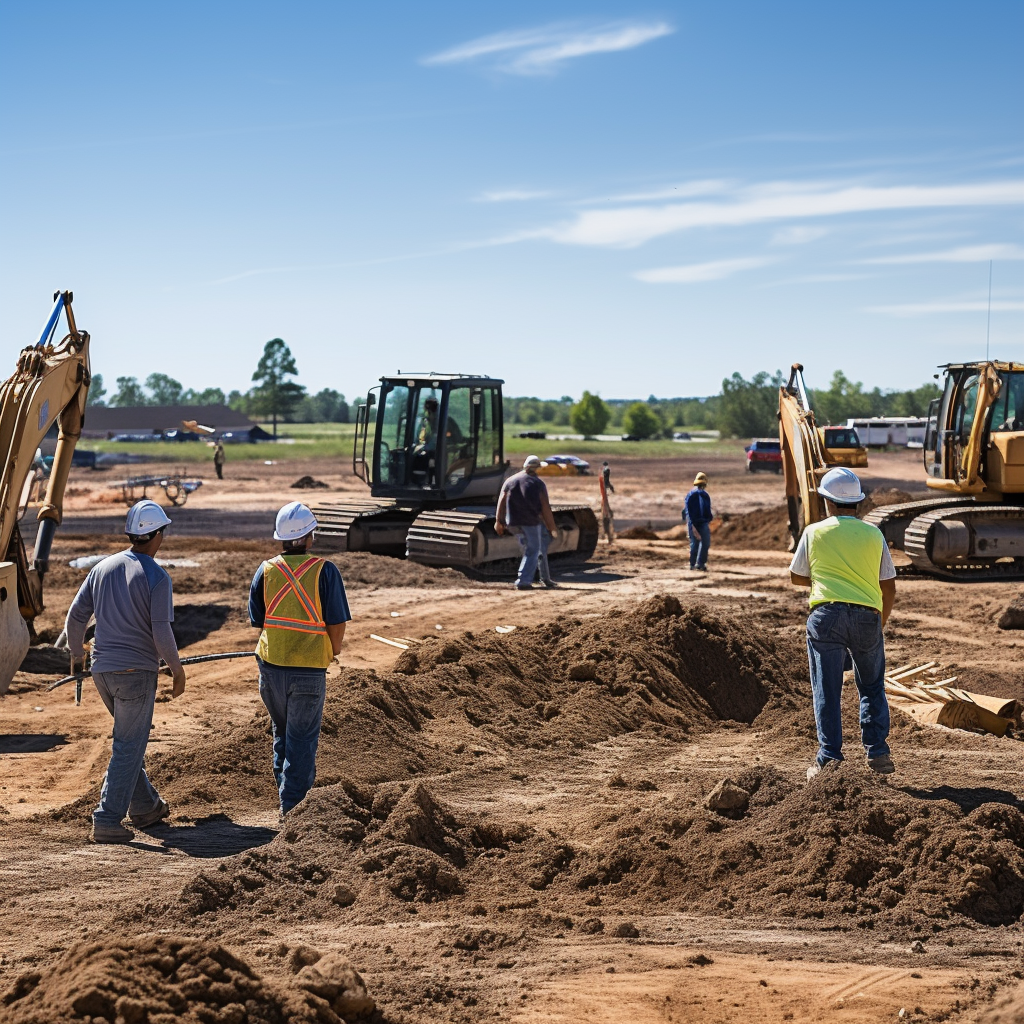


As the foundation of any construction project, a well-executed site grading plan is crucial for ensuring both functionality and safety. By carefully manipulating the contours of a site. A grading plan paves the way for seamless development, effective stormwater management, and optimal land use. This article will delve into the fundamental steps in developing a site grading plan, highlighting key considerations and best practices to set you on the path to success.
Site grading is altering the topography of a construction site to achieve optimal drainage, stability, and functionality. It involves precisely manipulating the earth's surface to ensure proper runoff, prevent erosion, and accommodate various structural needs.
Several factors influence site grading, including the natural contours and topography of the land, soil composition, environmental considerations, and project requirements. Each site grading plan must be tailored to the specific characteristics and challenges of the construction site.
Site grading plan involves a detailed earthwork analysis of the site's existing features, such as elevation changes, slopes, and natural drainage patterns, which helps identify potential grading and excavating contractor solutions.
With the preliminary site assessment and design objectives in place, the next step involves developing the grading plan. This stage requires meticulous attention to detail and close collaboration between professionals from different disciplines, including civil engineers and landscape architects.
Geographic Information Systems (GIS) are vital in site grading, providing advanced mapping capabilities and spatial analysis tools. GIS enables professionals to visualize, analyze, and efficiently manage site data, improving accuracy and efficiency.GIS software streamlines the analysis of location data and allows professionals to overlay multiple layers of information, such as topography, soil types, and drainage patterns.
This integration aids in making informed decisions and generating accurate grading designs. Cutting-edge grading software offers a range of powerful tools to streamline the design and visualization of grading plans. These software solutions enable professionals to create 3D models, simulate grading scenarios, and calculate earthwork calculations volumes accurately.3D modeling applications provide a realistic representation of the proposed grading design, allowing stakeholders to visualize the final result.
As a result, communication becomes more effective, as decision-making and early identification of potential problems. Real-time data collection and processing allow for prompt decision-making during the grading process. By eliminating delays and enhancing accuracy, this technology empowers professionals to optimise the grading plan and effectively address site challenges.
Site grading plans must comply with zoning and building codes to ensure a safe and legally compliant project. Understanding local regulations regarding setbacks, height restrictions, and environmental considerations is essential while developing a grading plan. Compliance requirements for grading often include factors such as erosion control, stormwater management, or environmental protection. Meeting these requirements ensures the grading plan aligns with local regulations and safeguards the surrounding environment. Legal considerations, such as protected habitats, natural resource preservation, or historical landmarks, restrict grading.
Adhering to these legal requirements demonstrates responsible planning and helps preserve the site's ecological and historical significance.The permitting process involves submitting the grading plan to local government authorities for review and approval. This process ensures that the grading plan meets all regulatory requirements and conforms to the local building standards and environmental guidelines.
Developers Research specializes in site grading analysis and offers comprehensive earthwork grading analysis. Mastering the essentials of site grading is essential for successful construction projects. Our professionals understand the importance of site grading, the components of a grading plan, and the associated challenges. By integrating advanced technology and adhering to local regulations, we ensure optimal functionality, safety, and environmental compliance. Our grading plans serve as blueprints for success, laying the foundation for a sustainable built environment.
1.How does site grading affect construction costs?
Site grading directly impacts construction costs, involving earthwork, soil stabilization, and drainage system installations. Proper grading reduces the need for extensive earthwork, mitigates erosion risks, and optimizes construction efficiency, thus lowering overall costs.
2.What are the common mistakes to avoid in site grading plan development?
Common mistakes in site grading plan development include inaccurate topographic surveys, failure to consider soil composition, inadequate drainage design, and lack of compliance with regulations. Engaging professionals and conducting thorough assessments can help avoid these pitfalls.
3.Can site grading impact the surrounding environment?
Site grading can have both positive and negative impacts on the surrounding environment. Proper grading techniques, erosion control measures, and responsible stormwater management reduce the potential for detrimental effects, ensuring minimal ecological disruption.
4.Is hiring a professional necessary for a small-scale grading project?
While small-scale grading projects may seem straightforward, hiring a professional is still recommended. Professionals possess the expertise to assess potential challenges, navigate regulations, and deliver effective grading solutions that meet the project's requirements.
5.Does site grading influence property value?
Site grading can indeed influence property value. Proper grading enhances a property's functionality, aesthetics, and safety, making it more attractive to potential buyers. Moreover, grading that addresses potential drainage issues or slope stability concerns contributes to the long-term value of a property.